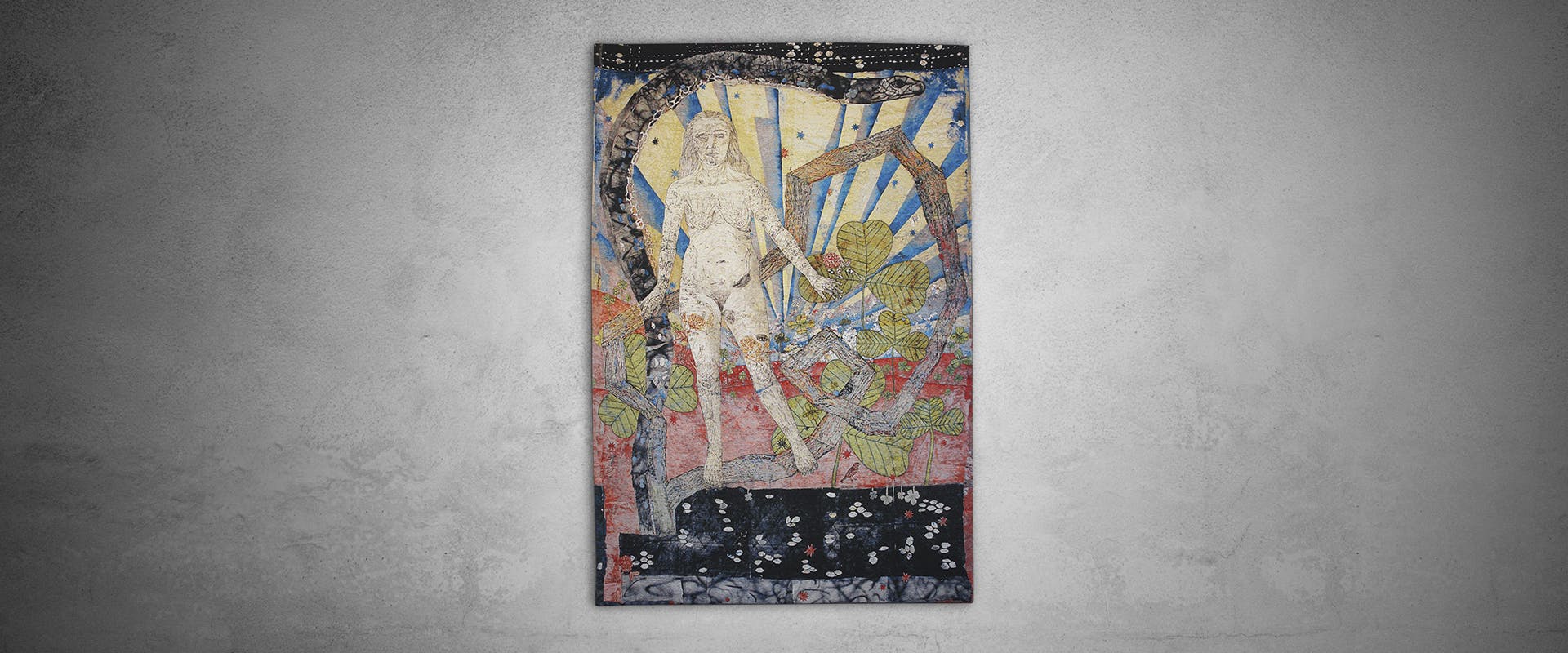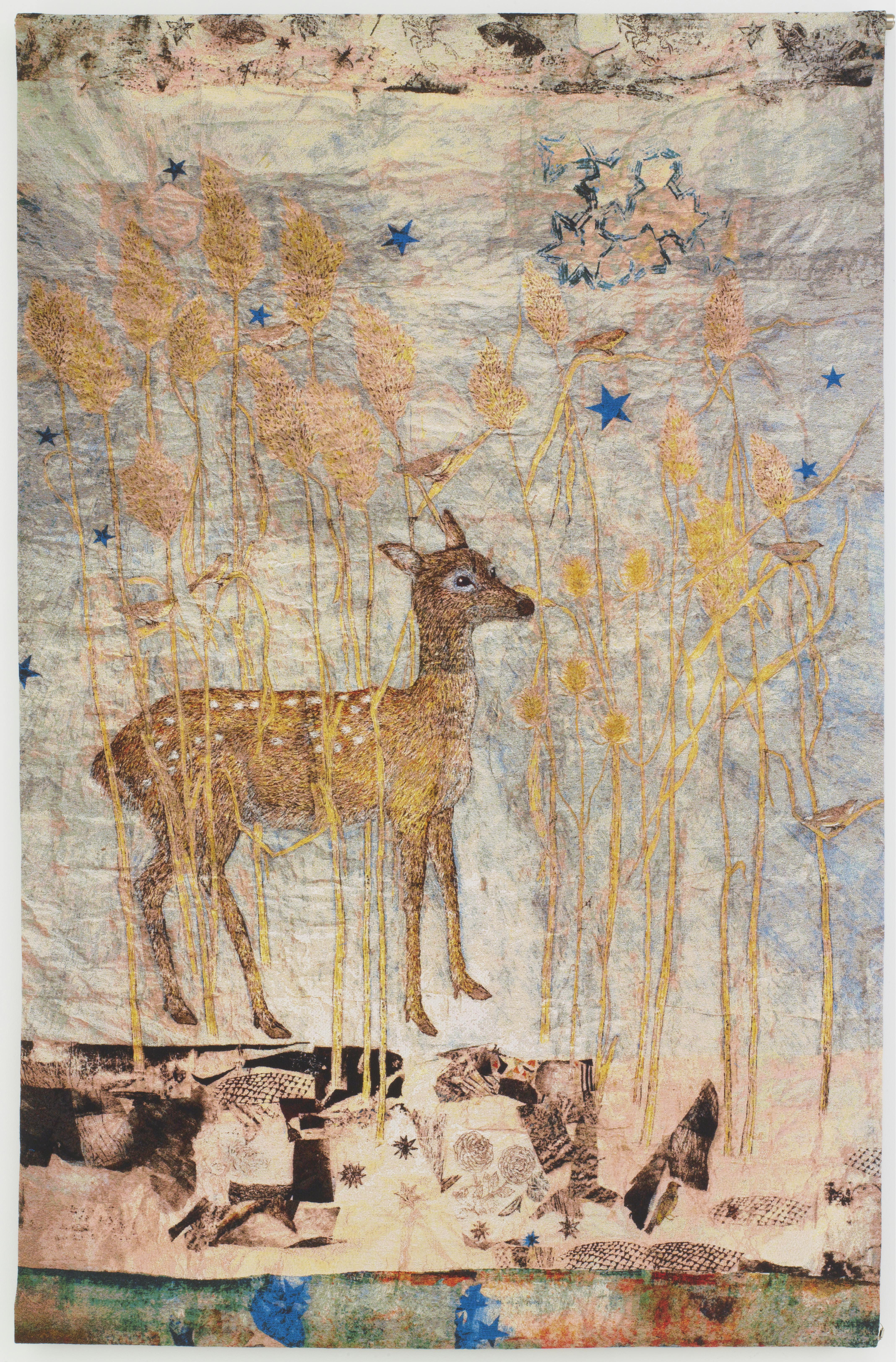Kiki Smith. What I saw on the road
The one-woman exhibition that the Uffizi Galleries is devoting to Kiki Smith.
The Uffizi Galleries are proud to host a project entitled What I Saw on the Road, the first monographic exhibition ever devoted to the work of Kiki Smith in the context of a public institution in Italy. The show is being held at the Andito degli Angiolini in Pitti Palace, a space now customarily set aside every spring for the great protagonists of art declined in the feminine.
The exhibition brings together about forty of Kiki's works, providing an exhaustive overview of her output over the past twenty years with brightly coloured jacquard cotton tapestries, fragile bronze, silver and wood sculptures and works on paper.
Laying proud claim to a place in so-called feminist art, the central and virtually exclusive theme of Kiki Smith's career until the 1990s was the body, in particular the female body in all its fragile mortality – often torn and at times even dismembered, but also heroically and proudly capable of redemption and rebellion. Kiki's more recent output, on display in this exhibition, has however broadened its horizon to take a more multi-faceted look at what goes on outside the body: What I saw on the road is what we happen to see and what interacts with our existence if we pay close attention and cast a poetic gaze on the relationship between the body and the world, between man, nature and the cosmos. To quote Eike Schmidt, Director of the Uffizi Galleries: “The extremely elegant grace of Kiki's latest works, whose often fragile and precious matter is an effective metaphor of the human – especially the female – condition, has the loftily ethical aim of recreating unity and harmony in what is so often a world of brutality and discord, unleashing a deeply revolutionary energy: hers is the vocabulary of a new, unexpected and disconcerting pietas”.
In Pitti Palace, Kiki Smith stages a splendid fairy tale of nature whose leading players are animals, onto whom we are naturally inclined to transfer our own human feelings and fears, in a tangle of groves and thickets as enchanted as they are peopled with obstacles and fantastic inhabitants of distant galaxies: “It is a contemporary cosmography useful for underscoring the organic, psychological, spiritual and imaginative continuity that knows no hierarchies among living beings and that constitutes the common backdrop against which the affairs of the entire natural universe are played out”, an invitation to reflect on the precious vulnerability of the human condition in relation to the complexity of life, adds Renata Pintus who co-curated the exhibition with Eike Schmidt.

